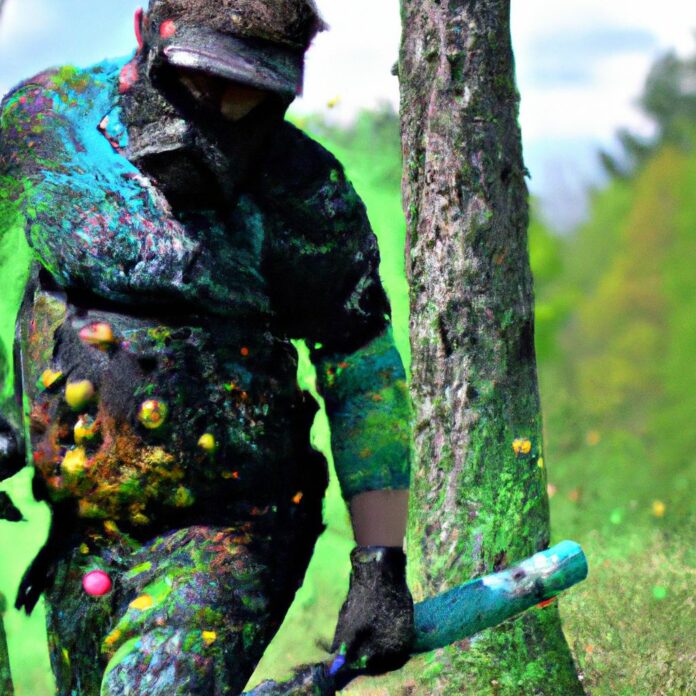Paintball is a popular recreational activity that simulates combat with players shooting each other with paint-filled pellets. While paintball can be thrilling and exciting, players often wonder if it can lead to bruising.
This article will explore the potential for bruising in paintball and provide insights into understanding the causes, impact, and prevention of bruising in this sport.
Bruises occur when blood vessels near the skin’s surface are damaged, resulting in discoloration and tenderness.
Understanding the mechanism of bruising involves recognizing that when the body experiences a sudden impact, the force can break blood vessels, causing blood to leak into the surrounding tissues.
So, can paintball cause bruising? The answer is yes. The impact of paintball on the skin can cause bruising, especially when players are hit with high-velocity shots.
The velocity at which paintball shots travel can vary depending on factors such as the air pressure in the marker and the distance between players. Higher velocities increase the likelihood of bruising upon impact.
Protective gear plays a crucial role in minimizing bruising during paintball. Wearing appropriate padding and clothing can help absorb the impact and reduce the risk of bruising.
However, even with protective gear, bruises can still occur, particularly in areas where the gear does not provide full coverage.
Common areas affected by paintball bruises include the arms, legs, torso, back, neck, and face. These areas are often exposed during gameplay and are more susceptible to bruising due to the thinness of the skin and the lack of underlying fat or muscle padding.
To prevent and treat paintball bruises, it is essential to prioritize safety and take necessary precautions. Wearing appropriate protective gear, including padded clothing, masks, and gloves, can significantly reduce the risk of bruising.
Practicing proper body positioning, using strategy to minimize exposure, and communicating with teammates can help avoid direct hits and subsequent bruising.
In the case of paintball bruises, providing immediate first aid is important. Applying a cold compress can help reduce swelling and minimize the severity of bruises. Over-the-counter pain relievers can also be used to manage any discomfort or pain associated with the bruises.
By understanding the causes of bruising in paintball and taking proper precautions, players can enjoy this thrilling sport while minimizing the risk of bruises and ensuring a safe and enjoyable experience.
What Causes Bruising?

Bruising can be an unexpected side effect of engaging in certain activities, like paintball. In this section, we will dive into what causes bruising and explore the underlying mechanisms behind this common phenomenon.
Get ready to uncover the factors that contribute to those mysterious blue and purple marks on our skin.
Understanding the Mechanism of Bruising
The understanding of the mechanism of bruising is crucial to comprehend how damage occurs to the blood vessels beneath the skin.
When the skin is impacted by blunt force trauma or sudden force, it can result in the rupture of blood vessels. Consequently, blood leaks into the surrounding tissues, leading to the formation of bruises and skin discoloration.
In the context of paintball, having a grasp of the mechanism of bruising is essential. When a paintball strikes the body, it can potentially cause bruising.
Several factors influence the likelihood of bruising, such as the velocity of the paintball shot, the type of paintball used, and the specific body areas hit.
The severity of paintball bruises can vary, ranging from mild to severe in nature. Some individuals may experience only a slight sting, while others may endure a sharp sting or even significant pain.
The level of pain experienced depends on an individual’s pain threshold, which can differ from person to person.
To minimize the risk of bruises during a paintball game, it is vital to wear suitable protective gear. Long-sleeved shirts and protective clothing are crucial for shielding the body.
Additionally, practicing proper body positioning and strategic play can help reduce the chances of being hit in vulnerable areas.
In the event that a bruise does occur, there are various first aid remedies available to alleviate discomfort and facilitate the healing process.
Cold compresses can be applied, topical antiseptic sprays can be used, and pain relievers may be taken if necessary.
Natural remedies like warm compresses, witch hazel, and Epsom salt baths might also aid in reducing swelling and expediting the healing time.
By developing an understanding of the mechanism of bruising and taking appropriate precautions, paintball enthusiasts can fully enjoy the exhilarating sport while minimizing the risk of bruises and minor injuries.
Can Paintball Cause Bruising?
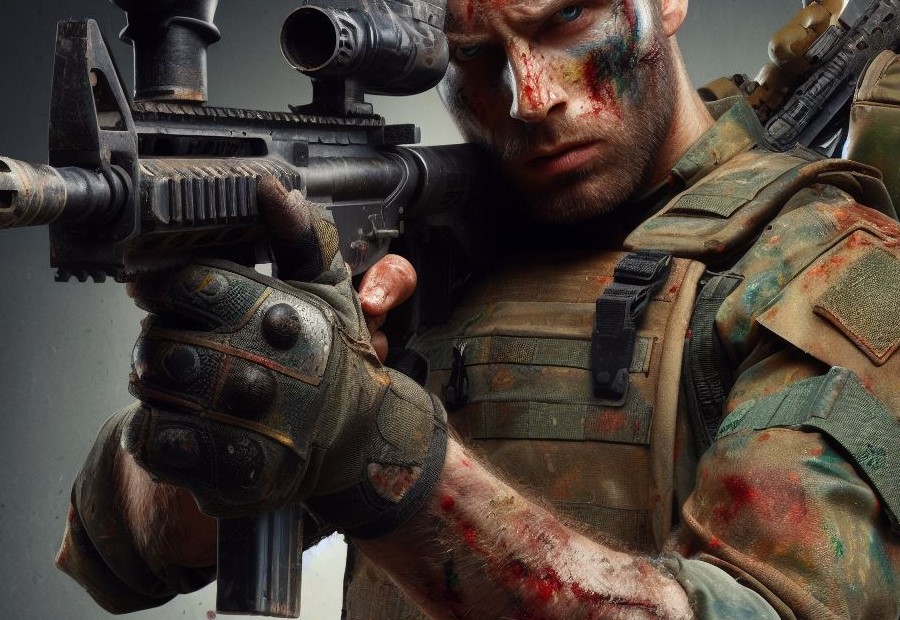
Paintball enthusiasts have often wondered about the potential bruising caused by this adrenaline-filled sport.
In this section, we’ll explore the impact of paintball on the skin, the velocity of paintball shots, and the role of protective gear in preventing bruising.
Get ready to uncover the facts and separate myth from reality when it comes to the effects of paintball on our bodies.
Impact of Paintball on the Skin
The impact of paintball on the skin can have various effects, including bruising, redness, and skin discoloration.
Here are some important points to keep in mind:
- Paintballs can cause bruising on the skin due to the blunt force trauma they deliver upon impact.
- The severity of pain and bruising may vary depending on factors such as the velocity of the paintball shots and the distance from which the shot is taken.
- Wearing properly protected areas of the body, such as thick clothing or protective gear, can help minimize the risk of bruising.
- It is important to adequately protect sensitive areas of the body, like the neck and face, as they are more prone to bruising.
Pro-tip: To provide extra cushion against the impact of paintballs, make sure you are dressed properly with multiple layers of clothing, including long-sleeved shirts and pants.
Additionally, proper body positioning and strategy can help reduce the chances of getting hit and minimize the risk of bruising.
Always follow safety standards and consider using a wrap-around bandage or protective clothing for added protection.
Velocity of Paintball Shots
The velocity of paintball shots plays a significant role in determining their impact on the skin.
- Higher velocities: Paintballs shot at higher velocities can cause more pain and bruising upon impact. The force exerted by the paintball increases with the velocity, resulting in a stronger impact on the skin.
- Regulated limits: Paintball fields typically have strict regulations on the maximum velocity allowed for the shots. This is to ensure the safety of players and minimize the risk of severe injuries.
- Industry standards: The standard velocity limit set by the paintball industry is 300 feet per second (fps) for outdoor fields and 280 fps for indoor fields. These limits help balance the excitement of the game with the need for safety.
- Protective gear: Wearing appropriate protective gear, such as a face mask and padded clothing, can help minimize the impact of paintball shots and reduce the likelihood of bruising.
- Distance and angle: The velocity of paintball shots, combined with the distance from which they are fired and the angle of impact, can affect the severity of bruises. Shots fired from a closer range or at a sharper angle are more likely to cause bruising.
- Player comfort: While some players may prefer higher velocity shots for the adrenaline rush, others may opt for lower velocities to minimize pain and bruises.
Protective Gear and Bruising
- Wearing appropriate protective gear is essential to minimize the risk of bruising in paintball.
- Dressed properly, players are less likely to experience bruising during a game.
- Wearing long-sleeved shirts and other protective clothing can provide an extra layer of protection against paintball shots and bruising.
- For maximum safety, protective gear should meet safety standards and cover sensitive areas such as the arms, legs, torso, and back, preventing bruising.
- Avoiding direct hits or shots that break the skin can help prevent bruises caused by blunt force trauma.
- In case of minor injuries or pain, applying a cold compress or using topical antiseptic spray as first aid remedies can help reduce swelling and promote healing after bruising.
- Players should also be aware of their physical exercise capabilities and avoid bruising by staying within their pain threshold.
- Wearing a thick layer of protective clothing or using a wrap-around bandage can provide extra protection and reduce the impact of a paintball shot, minimizing the risk of bruising.
Common Areas Affected by Paintball Bruises
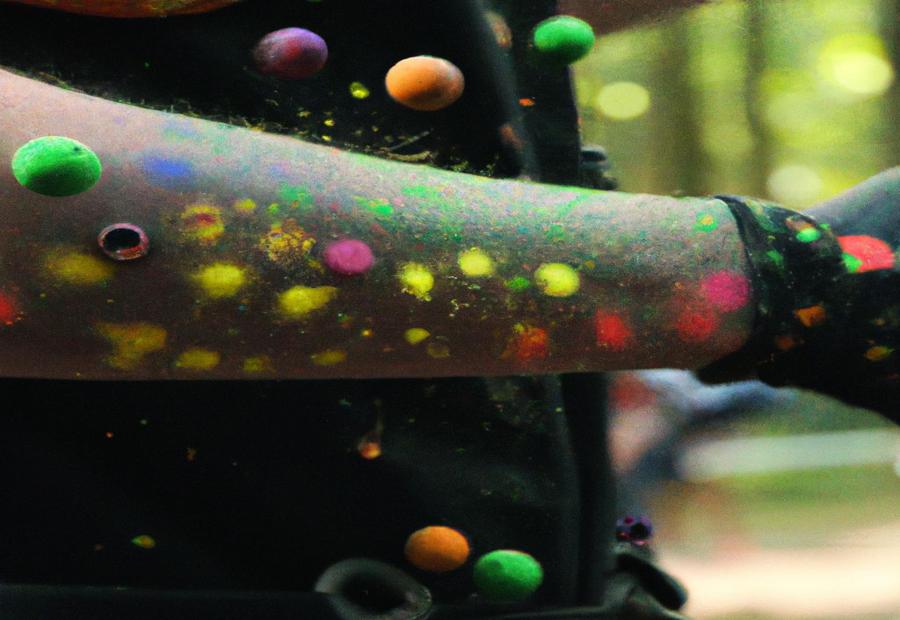
Photo Credits: Paintballbuzz.Com by Patrick Carter
Bruises from paintball can target various parts of your body, leaving their mark long after the game. In this section, we’ll explore the most common areas affected by paintball bruises.
From arms and legs to torso and back, even the neck and face aren’t spared. Discover the potential impact of this intense sport on your body and gain insights into the areas most prone to bruising.
Brace yourself for a surprising journey through the aftermath of paintball battles.
Arms and Legs
When it comes to paintball, the arms and legs are common areas that can be affected by bruises.
Here are some important points to consider:
- Exposed skin: Since the arms and legs are often exposed during paintball games, they are more susceptible to getting hit by paintballs.
- Protection: Wearing proper protective gear such as long-sleeved shirts and pants can help minimize the chances of getting bruises on the arms and legs.
- Impact: The severity of the bruises on the arms and legs can vary depending on the velocity of the paintball shots and the distance and angle of impact.
- Prevention: By learning the game, improving your skills, and being mindful of your surroundings, you can reduce the likelihood of getting hit in sensitive areas.
- Treatment: In case of any bruises, applying a cold compress, using topical antiseptic spray, and taking pain relievers can help alleviate discomfort and aid in the healing process.
Remember, painting can be an exhilarating sport, but taking proper precautions and wearing protective gear can help minimize the risk of getting bruises on your arms and legs.
Fact: Did you know that paintball bruises can vary in size, ranging from small, circular areas to larger lemon-sized bruises?
Torso and Back
The torso and back are common areas of the body that can be affected by paintball bruises.
Here are some factors to consider:
1. Protective gear: It is important to wear appropriate protective clothing, such as long-sleeved shirts and wrap-around bandages, to minimize the impact and reduce the risk of bruises on the torso and back.
2. Body positioning: Proper body positioning and strategy can help minimize the chances of getting shot in vulnerable areas like the torso and back. Learning to move strategically and keeping these areas protected can prevent bruises.
3. Velocity of paintball shots: The speed at which paintball shots are fired can impact the severity of bruises. Higher velocities can result in more significant bruises, so it’s important to play at safe speeds and follow safety standards.
4. Pain threshold: Each person’s pain threshold is different, so the severity of pain and bruising can vary. Some individuals may experience more discomfort and bruising on their torso and back compared to others.
5. First aid remedies: In case of bruises, you can apply a cold compress to reduce swelling and alleviate pain. Additionally, topical antiseptic sprays or creams like witch hazel can help promote healing and prevent infection.
Remember, it’s always important to play safe and properly protect yourself during paintball games. By wearing protective gear, adopting proper body positioning, and understanding the potential risks, you can minimize the chances of getting bruises on your torso and back.
Neck and Face
When it comes to paintball, the neck and face are particularly vulnerable areas that can be affected by bruises.
Here are some important points to consider:
- Exposed skin: The neck and face are often the only areas of the body that are not covered by protective gear, leaving them susceptible to paintball impacts.
- Sensitive areas: The skin on the neck and face is generally more sensitive and delicate compared to other parts of the body, making bruises in these areas more painful and noticeable.
- Missed shots: While protective masks are designed to shield the face, there may still be instances where a paintball hits the neck or accidentally glances off the mask and hits the face.
- Reducing the risk: To minimize the chances of getting bruises on the neck and face, ensure that the protective mask is properly secured and fits well. Additionally, consider using a wrap-around bandage or protective clothing to provide extra coverage.
- First aid: In the event that a bruise does occur on the neck or face, applying a cold compress and taking over-the-counter pain relievers can help reduce swelling and alleviate any discomfort. It is also essential to clean the area with a topical antiseptic spray to prevent any potential infections.
By taking the necessary precautions and treating any bruises promptly, paintball enthusiasts can continue to enjoy the exhilarating sport while minimizing the risk of injuries to the neck and face.
Preventing and Treating Paintball Bruises
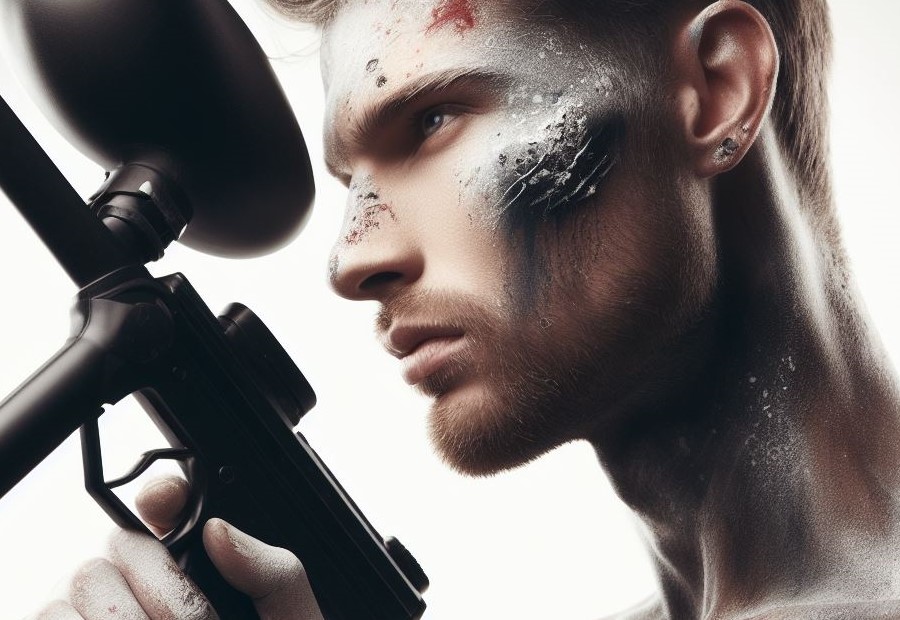
Protective gear, body positioning strategies, and first aid tips in this section. Discover how wearing the right gear can be a game-changer on the paintball field.
Unearth the secrets of proper body positioning and strategic tactics that can save you from those painful marks.
And fear not, we’ve got you covered with first aid advice to speed up the healing process. It’s time to armor up and learn how to outsmart those paintball bruises like a pro!
Wearing Appropriate Protective Gear
When engaging in the exhilarating sport of paintball, it is crucial to prioritize safety by wearing appropriate protective gear.
This includes dressing properly with long-sleeved shirts and pants made of a thin layer of fabric that can effectively shield the skin from the impact of paintball shots, minimizing the risk of bruises and injuries.
One essential piece of protective gear that should be worn is the anti-fog mask. Aside from safeguarding the face from paintball hits, this mask ensures clear vision throughout the game, contributing to a more enjoyable experience.
For added protection, consider using wrap-around bandages as extra support to reduce swelling in case of minor injuries. These bandages not only provide support but also help speed up the healing process.
It is also important to properly take care of any bruises that may occur during a paintball game. Applying a suitable pain reliever can help alleviate the stinging pain.
Additionally, using topical antiseptic spray or witch hazel can help prevent infections if the bruises break the skin.
Pro-tip: Always remember to follow safety standards, thoroughly research and learn about the game before participating. This will help minimize pain and avoid unnecessary bruises, allowing you to fully enjoy the exhilaration and competition of paintball.
Proper Body Positioning and Strategy
Proper body positioning and strategy are crucial in paintball to minimize the risk of getting bruises and increase your chances of winning the game.
It is important to maintain a low profile, using cover effectively, moving strategically, communicating with your team, and keeping an eye on the field.
- Maintain a low profile: One of the key strategies is to keep yourself low to the ground, making it harder for opponents to hit you.
- Use cover effectively: Utilize natural terrain or man-made obstacles to shield yourself from opponents’ shots. Position yourself behind cover and peek out to take accurate shots while minimizing exposure.
- Move strategically: Avoid making sudden movements that may draw attention to yourself. Sneak around the field, use stealth, and take advantage of the element of surprise.
- Communicate with your team: Coordinate with your teammates to establish a plan of attack or defense. Communicating effectively can help you strategize better and avoid unnecessary exposure to enemy fire.
- Keep an eye on the field: Constantly scan your surroundings to be aware of your position relative to other players. It will help you anticipate their moves and adjust your body positioning accordingly.
By following these strategies and positioning yourself strategically, you can minimize the chances of getting shot and reduce the risk of painful bruises while maximizing your chances of winning the game.
First Aid for Paintball Bruises
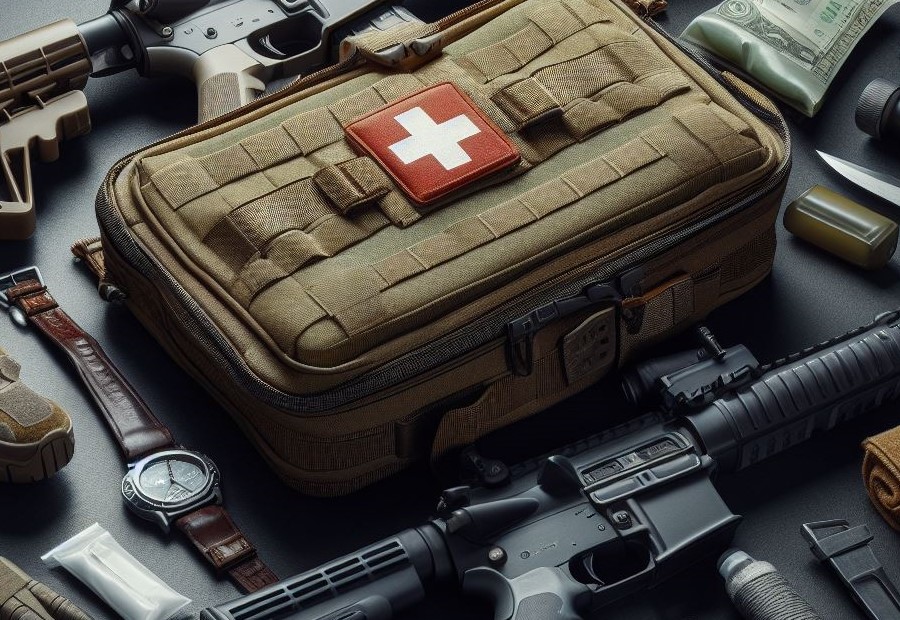
- If you experience a bruise from a paintball shot, it is important to apply a cold compress immediately to the affected area to reduce swelling and minimize pain. This is a helpful first aid remedy for paintball bruises.
- To prevent infection, it is crucial to clean the bruised area with a topical antiseptic spray. This is an important step in the first aid for paintball bruises.
- For pain relief, consider taking an over-the-counter pain reliever as directed by the recommended dosage. This is an effective way to address the discomfort associated with paintball bruises.
- Elevating the bruised body part can greatly improve blood circulation and speed up the healing process. Elevating the affected area is an important aspect of first aid for paintball bruises.
- If the bruise is severe or covers a large area, it is advisable to seek medical attention to rule out any serious injuries. This is an essential recommendation in the first aid for paintball bruises.
- Applying a thin layer of Vitamin K cream to the bruised skin can help promote faster healing. Incorporating Vitamin K cream into the first aid routine for paintball bruises is a beneficial step.
- To relieve pain and reduce inflammation, you can soak in an Epsom salt bath for 15-20 minutes. This is a soothing measure to consider in the first aid for paintball bruises.
- For minor bruises, warm compresses can be used to increase blood flow, which aids in the healing process. Warm compresses are an effective technique in the first aid for paintball bruises.
Remember, prevention is key to avoiding paintball bruises. Always wear appropriate protective gear, such as long-sleeved shirts, pants, and an anti-fog mask, to protect your face. Ensuring you are properly protected before entering the paintball field helps prevent bruises and other injuries.
By following the mentioned first aid remedies and taking necessary precautions, you can enjoy the exhilarating sport of paintball while minimizing the chances of bruises and promoting a safe game.
Frequently Asked Questions
Can paintball cause bruising?
Yes, paintball can cause bruising. When paintballs hit the body with a sudden impact, it can result in bruises.
The severity of bruises may vary depending on factors such as the kind of paintball used, the distance from the shooter, and the sensitivity of the body part that is hit.
How can I avoid getting bruises from paintball?
To avoid getting bruises from paintball, it is important to wear appropriate protective gear such as long-sleeved shirts, overalls, and boots. Additionally, changing your body stance and keeping moving can help avoid multiple hits in the same spot.
Learning the game and employing tactics, teamwork, and agility can also help minimize the chances of getting hit and bruised.
What can I do to treat paintball bruises?
To treat paintball bruises, you can apply a cold compress to the bruise site for 15 minutes on and 1 hour off to help reduce swelling. After the first day, warm compresses can be used to improve circulation and reduce discoloration.
Vitamin K cream and Epsom salt baths are also effective in promoting healing.
Additionally, some natural treatments such as rubbing the skins of potatoes or bananas on the bruises can provide relief.
How long do paintball bruises usually last?
The healing time for paintball bruises can vary, but they typically last around a week or two. However, it is important to note that everyone’s healing process is different, and some people may take longer to heal.
It is essential to properly care for the bruise and follow recommended treatment methods for a quicker recovery.
What other injuries can occur during a paintball game?
In addition to bruises, other common injuries that can occur during a paintball game include welts, cuts, sprains, twisted ankles, shortness of breath when shot in the throat, and head and ear injuries.
It is crucial to wear proper protective gear, follow safety rules, and stay vigilant to prevent these injuries and maximize fun while playing paintball.
What are some tips for beginners to avoid getting bruises in paintball?
For beginners to avoid getting bruises in paintball, it is recommended to learn the game before participating in matches.
Staying aware of your surroundings, following the rules set by paintball leagues, and wearing appropriate protective gear such as helmets, paintball masks, and tactical gloves can also help prevent bruises.
Focusing on protecting the sensitive areas of the body first and setting guidelines for casual games with friends are essential steps to ensure a safe and enjoyable paintball experience.

